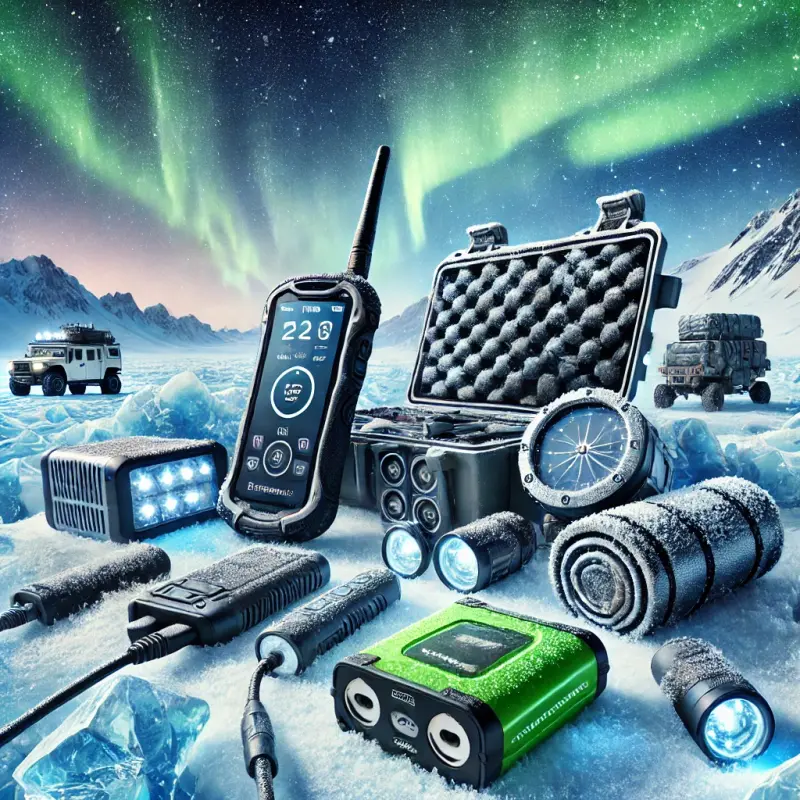Exploring the Role of Technology in Permafrost Tourism
Permafrost regions, known for their breathtaking landscapes of endless snow and ice, offer travelers an unparalleled opportunity to connect with nature. However, navigating these extreme environments requires thorough preparation and specialized tools. Modern technology has stepped up to meet this challenge, offering an array of gadgets tailored for safety, comfort, and functionality in subzero conditions.
The Challenges of Permafrost Travel
Permafrost zones pose unique difficulties for tourists. The combination of freezing temperatures, unpredictable weather patterns, and limited infrastructure creates a setting where minor inconveniences can quickly escalate into significant hazards. Whether it’s frostbite due to inadequate clothing or navigation errors in whiteout conditions, the risks are considerable.
These challenges highlight the need for dependable technology designed to endure the rigors of such climates. The following gadgets exemplify how innovation is making travel in permafrost not only feasible but also safer and more enjoyable.
High-Tech Insulated Power Banks
Electronics are essential for any traveler, from smartphones to GPS devices. Yet, extreme cold is notorious for draining battery life rapidly. Insulated power banks with temperature control systems are a game-changer. These devices maintain optimal internal conditions, ensuring power reserves remain functional even in freezing weather.
Features to Look For:
- Thermal Insulation: Protects batteries from temperature fluctuations.
- Fast-Charging Capability: Essential for recharging devices quickly during short breaks.
- Durability: Waterproof and shock-resistant designs add reliability in harsh environments.
Some models also include solar panels, providing a renewable energy source during extended trips away from conventional power supplies.
Wearable Heated Gear
Advances in wearable technology have introduced heated clothing into the realm of outdoor gear. Jackets, gloves, and insoles equipped with integrated heating elements keep tourists warm without excessive layering.
How It Works:
- Battery-Powered Heat: Rechargeable batteries power embedded heating wires, which distribute warmth evenly.
- Smart Controls: Many products come with smartphone apps, allowing users to adjust heat levels on demand.
These garments not only enhance comfort but also prevent conditions like hypothermia by maintaining body temperature.
Rugged GPS Devices
In regions where traditional landmarks are often obscured, accurate navigation tools are critical. Rugged GPS devices designed for extreme conditions combine robust construction with advanced features.
Key Features:
- Satellite Connectivity: Provides coverage in remote areas where cell signals are absent.
- Topographic Maps: Preloaded maps offer detailed terrain information.
- Extended Battery Life: Ensures functionality over long journeys, even in cold weather.
These devices are indispensable for ensuring tourists remain on track and avoid potential hazards, such as frozen lakes or unstable terrain.
Advanced Communication Tools
Staying connected in permafrost areas often means overcoming the lack of conventional networks. Satellite phones and personal locator beacons (PLBs) offer lifelines in emergencies.
Why They’re Essential:
- Global Coverage: Satellite phones work anywhere, ensuring help can be summoned when needed.
- Distress Signals: PLBs send real-time location data to rescue services at the push of a button.
Such tools provide peace of mind, allowing travelers to focus on the experience without constant worry about safety.
Smart Hydration Systems
Dehydration is a surprising risk in cold climates, exacerbated by the body’s reduced thirst response. Smart hydration systems encourage consistent fluid intake.
Innovations in Design:
- Temperature Regulation: Insulated reservoirs keep water from freezing.
- Consumption Tracking: Sensors monitor fluid levels and remind users to hydrate.
Proper hydration improves energy levels and overall resilience, vital for enduring the challenges of permafrost travel.
